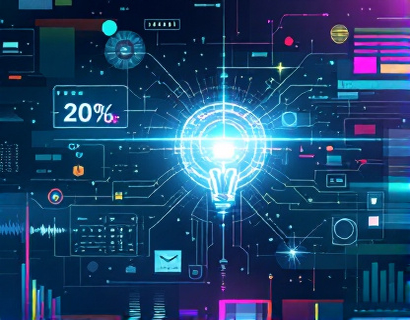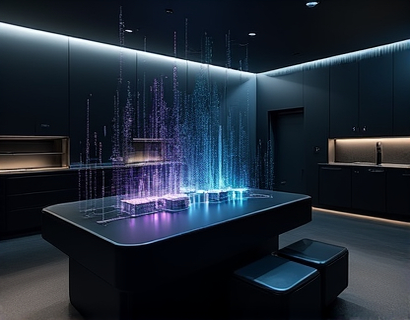Innovative Meditation Technology: Enhancing Relaxation and Mindfulness for a Balanced Life
In today's fast-paced world, finding moments of peace and tranquility can seem like an elusive goal. The constant demands of daily life, from work pressures to personal responsibilities, often leave individuals feeling overwhelmed and stressed. However, with the advent of advanced meditation technology, achieving relaxation and mindfulness has become more accessible than ever. This article delves into the innovative tools and software designed to guide users through effective meditation and mindfulness practices, offering a pathway to a more balanced and fulfilling life.
The concept of meditation and mindfulness is not new, but the integration of technology has revolutionized how these practices are experienced. Traditional meditation involves focusing the mind, often with the aid of a teacher or guided sessions, to achieve a state of deep relaxation and mental clarity. Mindfulness, on the other hand, is the practice of being fully present and aware in the moment, without judgment. Both practices have been shown to reduce stress, improve mental health, and enhance overall well-being. Modern meditation technology takes these ancient practices and enhances them with cutting-edge tools and techniques, making them more accessible and effective for a wide range of users.
Advanced Meditation Software: A Guide to Transformative Relaxation
At the heart of this technological advancement is advanced meditation software, designed to provide users with a comprehensive and user-friendly platform for meditation and mindfulness. These platforms offer a variety of features tailored to meet the diverse needs of individuals seeking to incorporate relaxation techniques into their daily routines. From guided sessions to calming soundscapes and interactive mindfulness tools, the software creates an immersive experience that fosters deep relaxation and mental well-being.
One of the key benefits of using meditation software is the convenience and flexibility it offers. Users can access guided meditations and mindfulness exercises from the comfort of their homes, at any time that suits their schedule. This accessibility is particularly valuable for those with busy lives who may find it challenging to attend in-person meditation classes or workshops. The software can be used on various devices, including smartphones, tablets, and computers, ensuring that users can practice meditation and mindfulness anywhere.
Guided Meditation Sessions: Structured Pathways to Relaxation
Guided meditation sessions are a cornerstone of meditation software, providing users with structured pathways to relaxation and mindfulness. These sessions are led by experienced instructors who guide users through various techniques, helping them to focus their minds and achieve a state of deep relaxation. The guided nature of these sessions is particularly beneficial for beginners, as it removes the uncertainty and self-doubt that can often accompany starting a meditation practice.
The content of guided sessions is diverse, catering to different levels of experience and specific goals. For instance, some sessions may focus on stress reduction, while others might aim to enhance sleep quality or boost creativity. Users can choose from a wide range of themes and durations, allowing them to tailor their practice to their individual needs and preferences. This personalization ensures that each session is relevant and effective, maximizing the benefits of meditation and mindfulness.
Calming Soundscapes: Enhancing the Meditation Experience
In addition to guided sessions, meditation software often includes a library of calming soundscapes designed to enhance the meditation experience. These soundscapes, which can range from gentle nature sounds to soothing instrumental music, create an immersive environment that helps users to relax and focus. The use of sound in meditation is rooted in the understanding that auditory stimuli can significantly influence the mind and body, promoting a state of calm and tranquility.
The soundscapes in meditation software are carefully curated to complement the guided sessions and stand alone as standalone relaxation tools. Users can select from a variety of sound options, adjusting the volume and mix to create a personalized audio environment. This flexibility allows for a more tailored and enjoyable meditation experience, as users can find the sounds that resonate with them the most and help them to unwind.
Mindfulness Tools: Cultivating Present-Moment Awareness
Mindfulness tools are another essential component of meditation software, designed to help users cultivate present-moment awareness and reduce stress. These tools can include breathing exercises, body scans, and mindfulness prompts that encourage users to stay grounded in the present. By practicing mindfulness, individuals can develop a greater sense of self-awareness and emotional regulation, leading to improved mental health and well-being.
Breathing exercises, for example, are a simple yet powerful mindfulness tool that can be practiced anywhere, at any time. Meditation software often provides step-by-step guidance for breathing exercises, helping users to focus on their breath and let go of distracting thoughts. Body scans, another common mindfulness practice, involve systematically bringing awareness to different parts of the body, promoting relaxation and reducing tension. These tools, when integrated into a regular meditation routine, can significantly enhance the overall effectiveness of the practice.
User-Friendly Interface: Making Meditation Accessible to All
The success of meditation software lies in its user-friendly interface, which makes the practice of meditation and mindfulness accessible to individuals of all skill levels. A well-designed platform ensures that users can easily navigate through the various features and find the resources they need without feeling overwhelmed. Intuitive menus, clear instructions, and visually appealing designs contribute to a positive user experience, encouraging regular use and long-term engagement.
For those new to meditation, the software often includes introductory content and resources to help them get started. This might include articles, videos, and tutorials that explain the benefits of meditation and mindfulness, as well as tips for establishing a consistent practice. By providing a supportive and educational environment, the software empowers users to take the first steps towards a more relaxed and balanced life.
Scientific Backing: The Evidence for Meditation and Mindfulness
The effectiveness of meditation and mindfulness practices is supported by a growing body of scientific research. Studies have consistently shown that regular meditation can lead to significant improvements in mental health, including reduced stress, anxiety, and depression. Additionally, meditation has been linked to enhanced cognitive function, better sleep quality, and improved emotional regulation. These findings underscore the value of incorporating meditation and mindfulness into daily life and provide a scientific foundation for the use of meditation software.
One key area of research is the impact of meditation on the brain. Neuroimaging studies have demonstrated that regular meditation can alter brain structure and function, leading to increased gray matter in areas associated with attention, emotion regulation, and self-awareness. These changes suggest that meditation not only provides immediate benefits but also has long-term effects on brain health and resilience.
Integrating Meditation into Daily Life: Practical Tips
While meditation software offers a powerful tool for relaxation and mindfulness, integrating these practices into daily life requires more than just using the technology. Here are some practical tips to help users make meditation a consistent and meaningful part of their routine:
- Set a specific time each day for meditation, such as in the morning before the day begins or in the evening before bed.
- Start with short sessions, even just 5-10 minutes, and gradually increase the duration as comfort and proficiency grow.
- Create a dedicated space for meditation, free from distractions and clutter, to help signal to the mind that it's time to relax.
- Use reminders or alarms to stay consistent, especially in the early stages of developing a meditation habit.
- Combine meditation with other mindfulness activities, such as mindful walking or eating, to reinforce the practice throughout the day.
By incorporating these tips into daily life, individuals can maximize the benefits of meditation and mindfulness, leading to a more balanced and fulfilling existence.
Conclusion: Embracing a Balanced Life Through Meditation Technology
In conclusion, innovative meditation technology offers a powerful and accessible pathway to relaxation and mindfulness. Through advanced meditation software, users can access a wealth of resources and tools designed to enhance their meditation and mindfulness practices. Whether through guided sessions, calming soundscapes, or interactive mindfulness tools, these platforms provide a comprehensive approach to achieving a balanced and peaceful mind.
The benefits of meditation and mindfulness are well-documented, and the integration of technology makes these practices more accessible than ever. By embracing meditation technology, individuals can take a proactive step towards managing stress, improving mental health, and fostering a deeper connection with themselves and the world around them. As we continue to navigate the challenges of modern life, the tools provided by meditation software serve as a valuable ally in the journey towards a more relaxed, mindful, and balanced life.










































